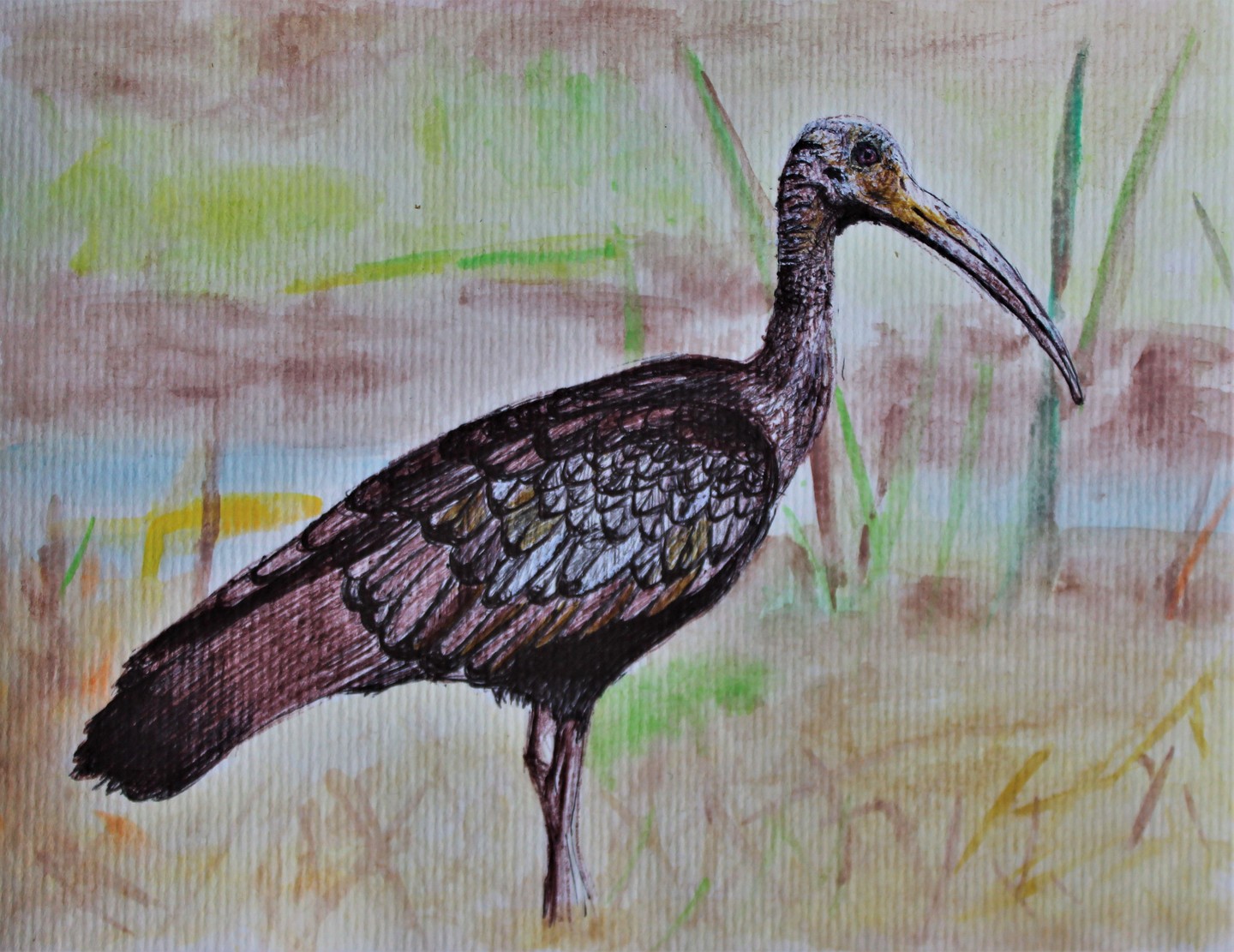Ballpoint pen and watercolour on paper.
1. Animal: Giant Ibis (Thaumatibis gigantea):
- There are only 345 birds left and all of them predominately found in northern and north-eastern Cambodia where it has a large range, but is relatively rare. A tiny population also persists in the extreme southern tip of Laos and a 2011 sighting was also reported in Yok Don National Park, Vietnam.
- This species is found in the lowlands, living in swamps, marshes, paddy-fields, open wooded plains, humid clearings, and pools within deciduous dipterocarp lowland forest.
- They have a varied diet consisting of invertebrates, crustaceans, small amphibians, reptiles and seeds.
- Adults are mostly dark with naked, greyish head and upper neck, dark bands on hindcrown and nape and pale greyish wing-coverts and secondaries with dark cross-bars. Juvenile has short grey feathers on hindcrown and hindneck, lacking the dark bands on hindcrown and nape.
2. Why they are endangered?
Giant ibis has been classified as critically endangered based on the likelihood of continuing decline, predominately due to the effects of human disturbance and hunting. Part of their decline may be because of the decline in large grazing animals, particularly wild water buffalo, as these birds rely on the pools and wallows dug by buffalo as feeding sites.
